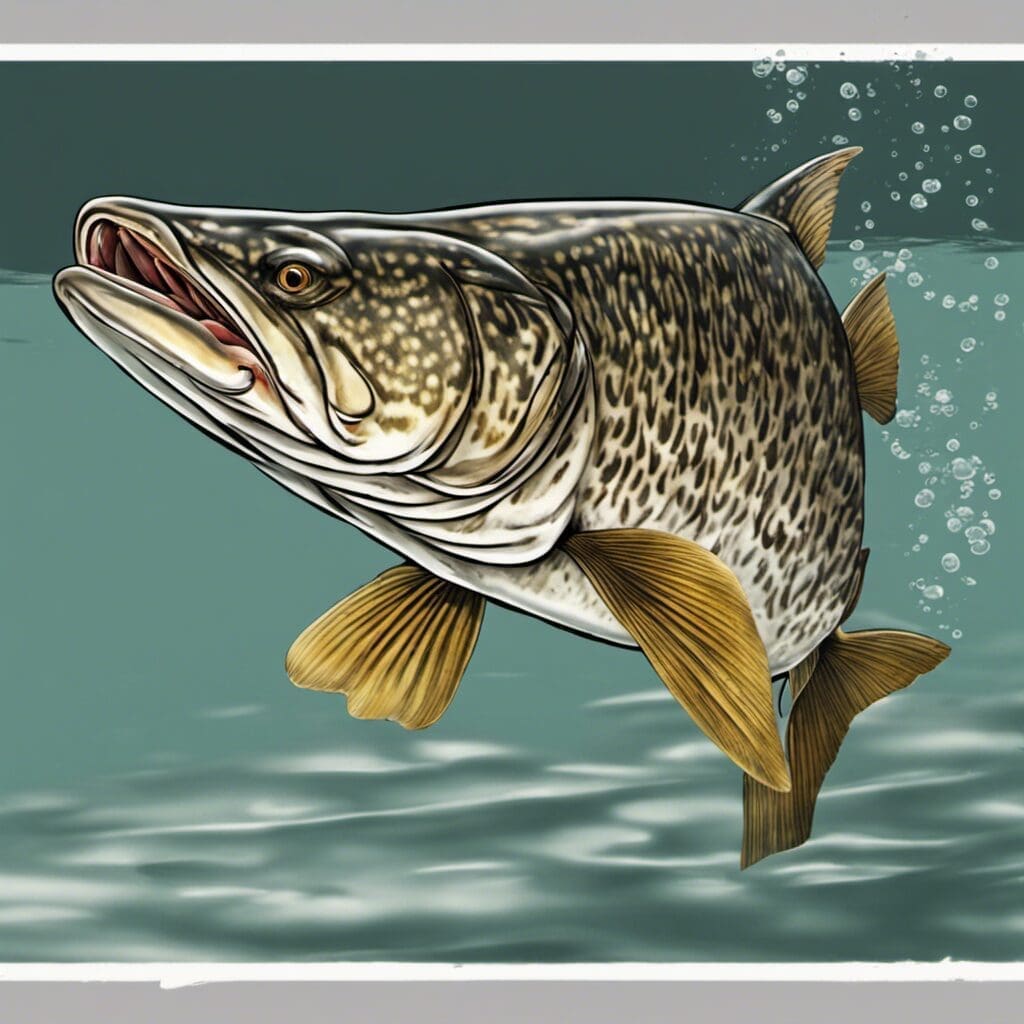Introduction
Northern pike, scientifically known as Esox lucius, belongs to the Esocidae family.
Conservation Status
The Northern pike is currently classified as a ’Least Concern’ species, according to the International Union for Conservation of Nature. Conservation efforts for this species are primarily targeted towards maintaining healthy population levels by regulating fishing practices.
Statistics
| Statistic | Average | Range |
|---|---|---|
| Length | 70-120 cm | 40-150 cm |
| Weight | 4-7 kg | 1-16 kg |
| Lifespan | 15 years | Not Specifiable |
Distribution
Northern pike can be found in freshwater bodies of the northern hemisphere, commonly in USA, Canada, Russia, and Northern Europe. Pike are relatively sedentary and tend to stay in the same home range for many years.
Habitats
The water type inhabited by the Northern pike is primarily fresh water. They usually prefer shallow, vegetated areas in lakes, rivers, and reservoirs. They can adapt to various temperature ranges, typically between 4 and 22 degrees Celsius.
When and Where to See
Northern pike are generally seen in greater numbers during the spring spawn season which occurs between March and May. They are most active during dawn and dusk.
Best Fishing Locations
- Gull Lake, Alberta, Canada
- Lake Miltona, Minnesota, USA
- Waterhen River, Manitoba, Canada
- Lake of The Woods, Ontario, Canada
- Big Manistique Lake, Michigan, USA
- Lough Derg, Ireland
- Lake Konnevesi, Finland
- Volga River, Russia
- Lake Pyhäjävi, Finland
- River Waveney, UK
When you’re searching for pike, look for areas with plenty of vegetations, as pike use these areas to lie in wait for their prey.
How to Catch
Preferred bait for catching pike include live or dead fish, as well as lure fishing with spoons or spinners. Techniques that work well include trolling and baitcasting. Early morning hours or late afternoon to dusk are considered the best times for fishing pike.
Identification Guide
Northern pike have a distinct long and slender body shape. They’re primarily olive green in color, with white or yellow belly, and have dark, bean-shaped spots on their flanks. They can be easily distinguished from similar species by their duckbill-shaped snout and sharp teeth.
Culinary
Northern pike has a distinct and robust flavor with a good nutritional profile, high in protein and low in fat. Its flesh is white and has a flaky texture. Pike can be cooked in a variety of ways, commonly poached, baked or fried. Care should be taken to remove the numerous small bones before cooking.
Additional Information
Northern pike are ambush predators, catching their prey by surprise with their sudden and strong acceleration. They are territorial in nature, and during the breeding season, their behaviour becomes more aggressive. Birds of prey, large mammals and larger pike are natural predators. Pollution and overfishing poses significant threats.
References and Further Reading
- U.S. Fish & Wildlife Service: Northern Pike
- Ecological and evolutionary patterns in the diets of a northern freshwater fish – Insights from metabarcoding and SIA
- FishBase: Northern Pike

